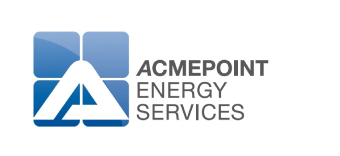What should you pay attention to when setting up a solar power generation system?
With rising environmental awareness and government policy support, Taiwan’s solar power installations are rapidly increasing. According to the Industrial Technology Research Institute’s 2018 “Taiwan Green Industry Report,” Taiwan’s solar photovoltaic power generation capacity increased sixfold between 2011 and 2018. However, problems have also emerged behind the wind and solar power, with “solar power plant orphans” frequently making headlines. Based on our experience and research, we’ve discovered three key characteristics of these “solar power plant orphans”:
- Poor initial planning
- Low construction costs
- Lack of risk awareness
In fact, these three factors are highly correlated with the cost of setting up a solar system. We understand that every builder wants to save money, but skimping on some details can lead to regret later. Below are some frequently asked questions from our project services for your reference.
1. The importance of material selection and construction quality!
Material selection is a crucial step. For example, solar panels are often offered by manufacturers of solar photovoltaic systems for 5 to 12 years. However, in addition to the warranty period, it’s also important to carefully examine the warranty terms and conditions. Be aware of any conditions that are not covered. For example, most warranties exclude wind damage.
In addition, the power conversion rate of solar photovoltaic panels is also a focus of everyone’s attention. However, the conversion efficiency of solar photovoltaic panels will decrease year by year;Therefore, it is necessary to understand the brand of photovoltaic panels used, the degree of conversion efficiency decline, and review the 20-year investment returns to understand the benefits and guarantees of setting up a solar energy system.
Before construction begins, the installation environment for the solar panels should be assessed, including the load-bearing capacity of the roof and beams, and whether the roof is leaking, to reduce the risk of subsequent renovations.In addition, the optimal installation angle for this project can be estimated through computer simulation based on multiple conditions such as carrying the lowest wind resistance and achieving maximum solar radiation.
Other factors, such as the material, width, and thickness of the panels and fixed scraps, also affect the lifespan of solar photovoltaic panels. Taking rooftop solar as an example, factors such as floor height, the topography of the factory site, and the maximum wind speed over the years will all affect the material selection criteria for installing the solar photovoltaic system.
In fact, a comprehensive and systematic planning at the initial stage not only helps to improve the safety and efficiency of the solar energy system, but also avoids the gradual emergence of various problems after construction begins, which in turn increases the project costs.
2. Maintenance measures are more important than solar power generation monitoring systems
Nowadays, every solar photovoltaic system provider offers a cloud-based monitoring system, allowing users to monitor power generation status, daily electricity sales revenue, and other data at all times. However, system providers rarely mention responsiveness and capabilities, as well as maintenance measures and frequency. We’ve also found in relevant Facebook groups that the most common issue is the original system provider’s failure to contract or commit to maintenance services, forcing clients to outsource maintenance. This demonstrates the importance of paying attention to the many unseen details.
Regarding response speed and capability, cloud-based solar power generation monitoring systems can issue emergency notifications for abnormal data, enabling project managers and related personnel to obtain real-time intelligence. However, response measures and error correction timelines require not only a comprehensive SOP mechanism but also long-term adherence and optimization to ensure robust response speed and capability.
Regarding maintenance measures and frequency, the varying environmental conditions at each site lead to varying levels of dust accumulation. Excessive dust accumulation coupled with prolonged periods of no rainfall can significantly reduce power generation efficiency. System providers must be able to conduct regular inspections and maintenance according to the initial plan, even increasing the frequency of maintenance if necessary. Obtaining commitment from system providers during the initial planning phase, before signing a contract, can ensure the return on invested capital and stable returns.
3. Risk Awareness – Even with sound planning, risk must be transferred
Taiwan faces 5 to 10 typhoons annually, especially in recent years, with record-breaking wind speeds. This has every solar photovoltaic system manufacturer cautiously preparing comprehensive plans, but no one can guarantee against unexpected events. Solar photovoltaic systems often require millions or even tens of millions of dollars in investment, and if risk mitigation is not properly managed, the possibility of another “solar power plant orphan” could emerge.Therefore, it is recommended that you also plan insurance for the solar power generation system site; if a wind disaster causes unavoidable damage, you can still obtain compensation and carry out repairs.
Finally, we recommend that friends who are interested in setting up a solar photovoltaic system pay attention to various information and ask the system vendors you are inquiring about to provide necessary information so that you can choose a trustworthy solar photovoltaic system vendor.



